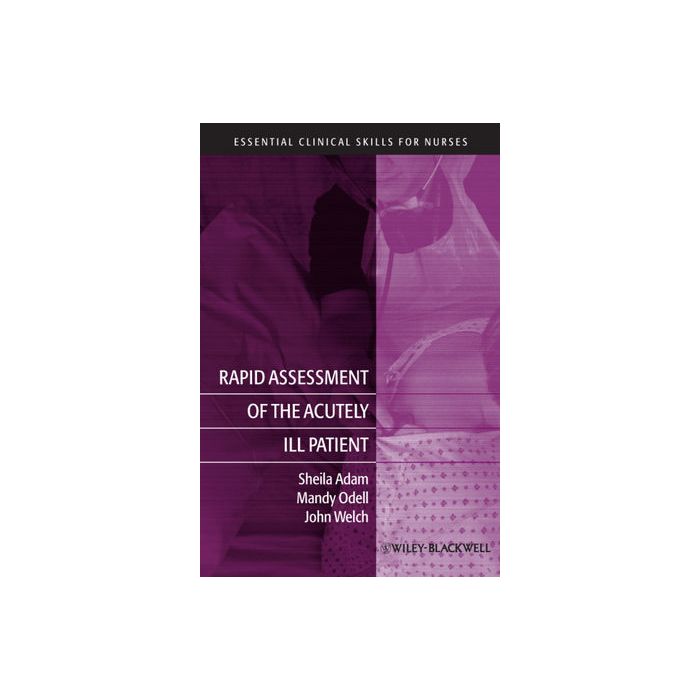Rapid Assessment of the Acutely Ill Patient [Adam; Odell; Welch - Wiley - Blackwell]

- ISBN/EAN
- 9781405169936
- Editore
- Wiley - Blackwell
- Formato
- Brossura
- Anno
- 2009
- Pagine
- 248
Disponibile
38,70 €
Rapid Assessment of the Acutely Ill Patient sets out the principles and practices needed for early recognition and assessment of patients either at risk of or showing signs of acute deterioration, or those recently relocated from higher levels of care. The focus is on patient assessment, interpretation and evaluation of data, immediate management of significant problems, ongoing and further assessments in order to improve clinical outcomes.
Rapid Assessment of the Acutely Ill Patient provides a framework for a systematic initial patient assessment and explores principles of effective assessment. Body systems are considered in order of life-threatening priority following the ABCDE approach, dealing with the assessment and management of airway, breathing, circulation, disability - and everything else; covering topics such as visual, palpatory and auscultatory assessment, use of additional documented information (charts, notes etc), and interpreting diagnostic investigations. Methods to ensure effective communication and team-working are also discussed.
Key features
Part of the Essential Clinical Skills for Nurses series
Aimed at nurses working in wards and specialist departments
Explores the assessment skills required for a rapid response to a patient at risk of becoming acutely unwell
Enables students and practitioners to develop practical and interpretative skills
Provides a framework for assessment and principles of first line treatment
Includes ‘Look’, ‘Listen’, ‘Feel’ and ‘Measure’ icons
Maggiori Informazioni
| Autore | Adam Sheila; Odell Mandy; Welch Jo |
|---|---|
| Editore | Wiley - Blackwell |
| Anno | 2009 |
| Tipologia | Libro |
| Lingua | Inglese |
| Indice | 1. Why Rapid Assessment Is Essential for Ward Staff. 2. Track and Trigger Systems: Early Warning Scores, Calling Criteria and Rapid Response Teams. 3. Assessment Techniques. 4. A–B–C–D–E: Airway Assessment and Management Techniques. 5. A-B-C-D-E: Breathing (and Failure to Breathe). 6. A–B–C–D–E: Circulation (and Circulatory Failure). 7. A–B–C–D–E: Acute Neurological Care (Disability). 8. A–B–C–D–E: Everything that Should Be Considered for Other Potential Problems. 9. Patient-centred Care, Team Working and Communication. Appendix 1: Acid–Base Balance and Arterial Blood Gases. Appendix 2: Oxygen Delivery Devices. Index. |
Questo libro è anche in:
